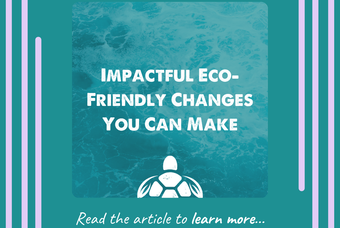The News-Hub/ Articles
Back to Articles
Recommended Articles
 The Importance of Affordable Water Purification Systems
The Importance of Affordable Water Purification Systems
Since the dawn of time, mankind has learned how to harness the phenomenal power of water. From the simple turbines built by the Romans to the incredible marine energy that we see emerging today, water has been used effectively and sustainably to propel mankind forward. Yet, for of all of our remarkable achievements, water poverty (the condition of not having access to a suitable amount of clean water) remains a dire problem.
In a world of 7.8 billion people, a shocking 785 million people (1 in 10), lack access to safe water. One third lack access to a clean toilet. Water poverty is most severe in Africa, with Eritrea topping the list. A shocking 80% of Eritrean citizens lack basic water services. Every year, nearly one million people perish from water-related diseases. Every two minutes a child dies.
In Africa, women are most affected by water poverty because they are responsible for collecting water for drinking, sanitation, cooking and hygiene. Some women walk up to 25km a day collecting water. Collectively, women and girls spend 266 million hours a day in search of a water source. Unsurprisingly, this means that women have less time for work, school, and education. Consequently, they are trapped in a cycle of poverty. Women are simply unable to live up to their full potential. They are deprived of basic human rights.
Fortunately, this situation is not without hope, and there are many organisations working across the world to empower women in these regions. They are doing all they can with the resources available to overcome water poverty. Often this is done through water purification systems.
So, how can water be purified cheaply?
There are many different ways to purify water. The cheapest way is to boil it. A question that’s often asked is why people without clean water don’t just boil the water that they have? The answer is that this is not effective. There are countless parasites, germs and microbes in water that can cause deadly waterborne diseases such as typhoid fever, cholera, giardia, and dysentery.
The water that we drink in developed countries has undergone extensive treatment in plants using chemicals. It has not just been boiled. Therefore, although boiling can be helpful, it is not sufficient. Additionally, boiling water requires fire and fuel but for people living in poverty, they do not have the luxury of just turning on a stove. They have to find their own fuel. The simple act of boiling water is expensive and time-consuming for people with hardly anything.
Another cheap water purification method is to use water purification tablets. There are numerous versions of these tablets on the market. They can be up to 99% effective. However, they can be expensive and do not confront the root of the problem. Using bleach to purify water is also a possibility. Yet, bleach is expensive and pouring in the wrong amount can prove to be fatal.
In recent years, innovative companies have come up with inventions such as the life straw and even a bike with a built-in water purification system. Undeniably, these inventions have saved lives and have made life much more bearable for many people across the world. The bike in particular has empowered women as they now have more free time to pursue other activities.
What are more sustainable ways to purify water locally?

Photo by Chaucharanje from Pexels
Although some of the previously-mentioned water purification methods are effective, they are not necessarily sustainable. Luckily, there are water purification systems in place which have proved to have longer-lasting effects.
One of these methods is known as SODIS (Solar Disinfection). This is a simple and inexpensive method which is used all over the developing world. The method uses solar energy to make contaminated water much safer to drink. Up to 99% of the microorganisms responsible for cholera and diarrhoea are destroyed. The method was first developed in the 1980s. For the method to be effective, water must be placed into plastic containers and left in bright sunlight for a minimum of six hours. The temperature of the water must be at least 45 degrees Celsius for pathogens to be destroyed. Interestingly, only plastic bottles can be used as UV rays from the sun cannot penetrate glass easily. Thus, the SODIS water purification method is one way to use plastic that does not contribute to the global plastic waste problem.
Another effective water purification method comes in the form of ceramic water filters. This is an inexpensive type of water filter that relies on the small pore sizes of ceramic material to filter out bacteria and pathogens from water. The method was inspired by nature’s method of filtering water through layers of porous rock. The ceramic water filters last for approximately 8 months with proper care.
Like ceramic filter water purification systems, sand filters also remove harmful bacteria by filtering. Sand filters are cheap and require no power whatsoever. They are small and indestructible, and can be built entirely from local materials in developing regions. The only drawback is the water can take some time to filter.
Goal Number Six of the United Nations Sustainable Development Goals for 2030 is “Clean Water and Sanitation” for all. Let’s hope that in the decade we have ahead of us, we will find the solutions to achieve this goal. Fortunately, we have seen that there are indeed ways to overcome water poverty. Everyday, women are becoming more empowered by advances in water filtration technology. In the decade ahead, we have a real opportunity to achieve this vital UN goal.
Empty content. Please select category to preview











0 comments. Write a comment